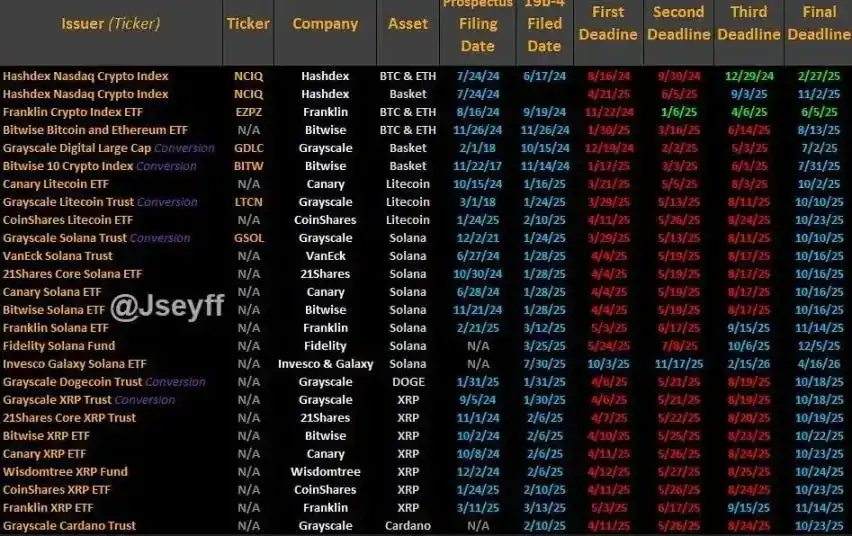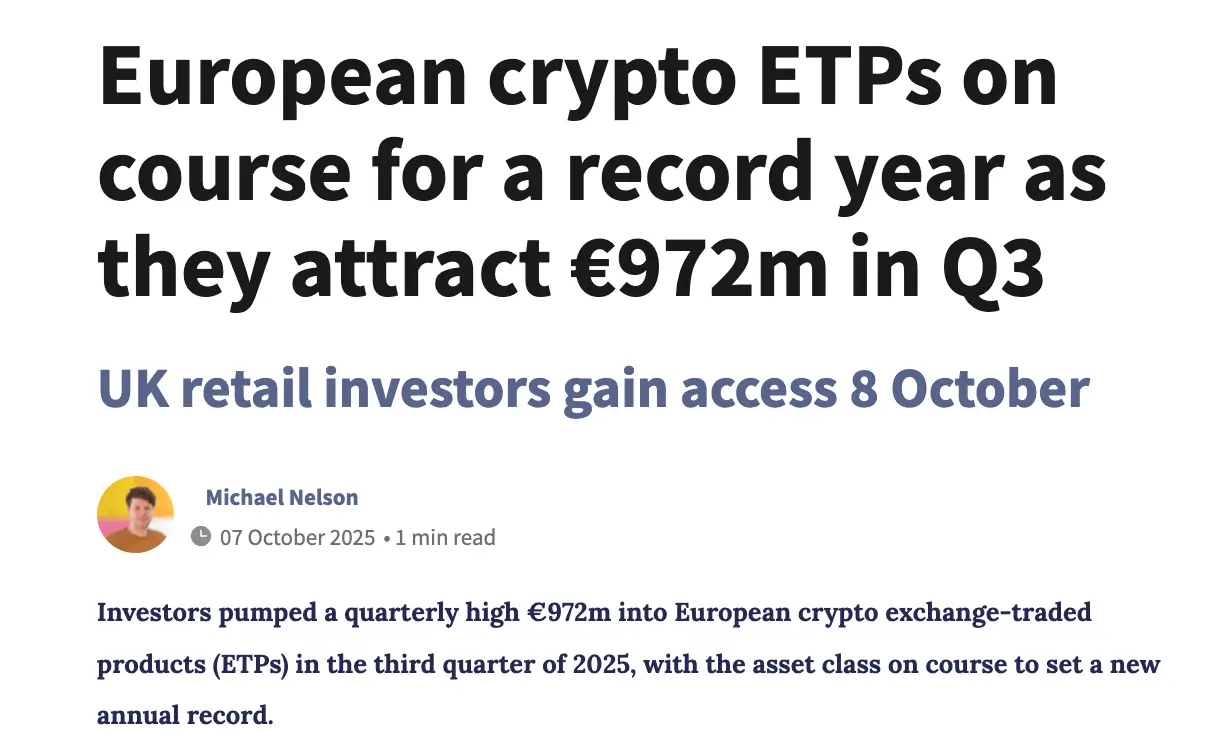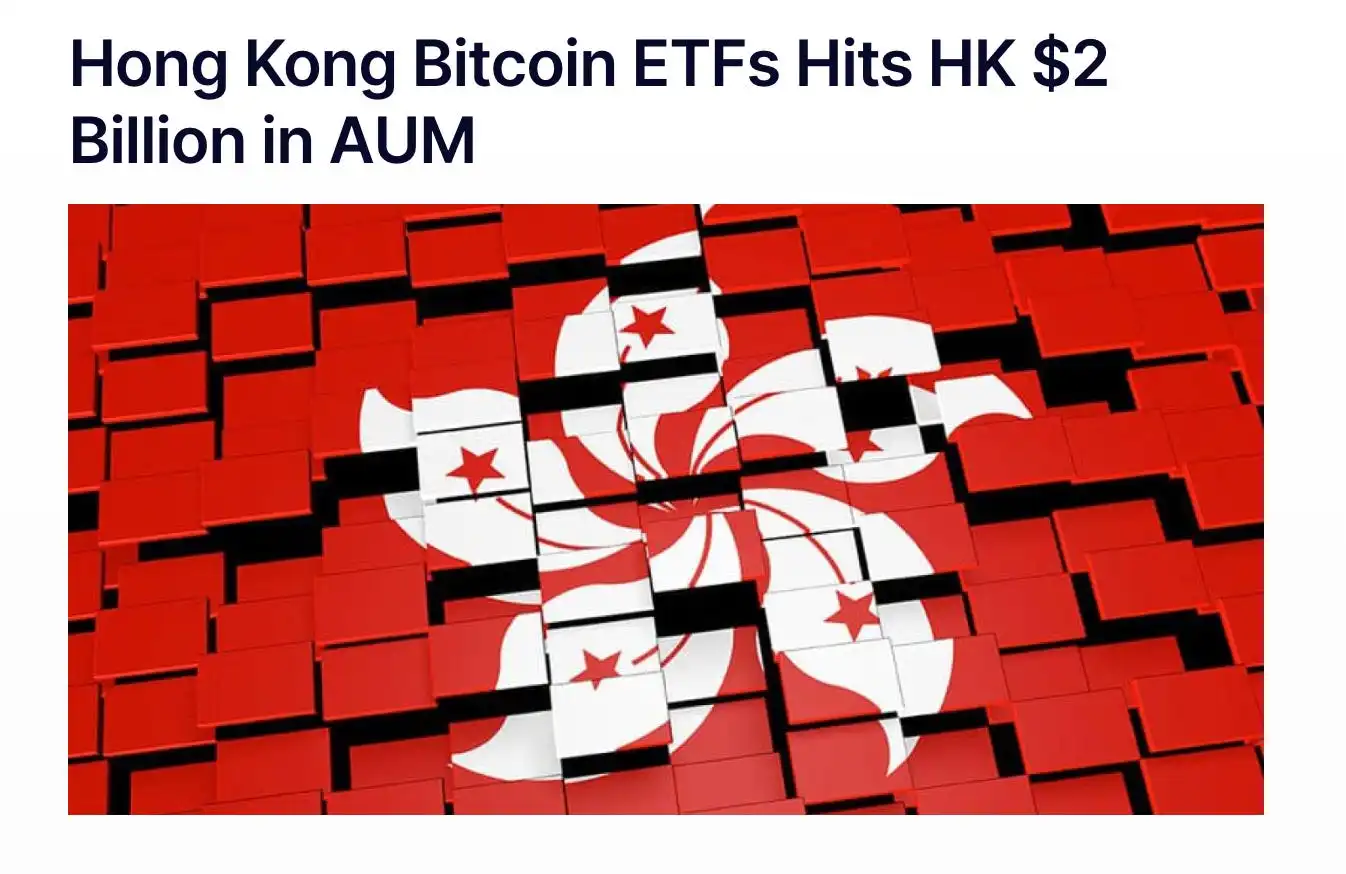Author: Tristero Research
Translation: Baihua Blockchain
In September 2025, the U.S. crypto market underwent a dramatic change. For many years, launching a new fund meant enduring a regulatory hell lasting up to 240 days. Each product was a customized battle with the U.S. Securities and Exchange Commission (SEC). Then, with just one vote, the SEC replaced the old rulebook with a stopwatch.
By approving a universal listing standard for commodity trust shares, the SEC opened a fast track for exchange-traded products (ETPs) on crypto trading platforms. What used to take eight months now only takes two. The result: a traffic jam before the deadline, with dozens of alternative Token ETFs (altcoin ETFs) from Solana to Dogecoin all waiting for decisions in the same narrow window.
Welcome to ETF month.
New Game Rules
Previously, crypto ETFs required a “19b-4” rule change—each one a customized request. The new system eliminates this step for assets that pass a clear, rules-based test. This “golden ticket”—the financial world’s “TSA PreCheck” (airport fast security screening)—is for futures markets regulated by the U.S. Commodity Futures Trading Commission (CFTC) with at least six months of trading history.
This test created a de facto cryptocurrency caste system:
First Tier: Bitcoin and Ethereum, which already have market-shaking spot ETFs.
Second Tier: Assets like Solana, XRP, and Cardano, which have futures markets, thus unlocking the fast track.
Third Tier: All other coins, still stuck in the slow lane.
This marks a shift from “regulating through enforcement” to “regulating through infrastructure.” The SEC is no longer debating the utility of a coin but asking: Is it traded in a mature, monitored market?
October Schedule
The new rules have led to a packed October schedule:
October 10: Grayscale Trust conversions (Solana, Litecoin).
October 16: Spot Solana ETF decision (21Shares, Bitwise).
October 18–25: XRP ETF approvals are expected, with at least one almost certain to get the green light.
Also in line are: Cardano (Grayscale's GADA), Dogecoin, Avalanche, Hedera.

The biggest cultural signal is Dogecoin. Whether it is a meme coin or not, DOGE qualifies because it has a regulated futures market. The new framework is neutral; it only cares about the data.

This first wave is also pushing the next regulatory frontier: staking. Several Solana applications propose passing returns to investors through staking fund assets. If approved, the ETF will evolve from a passive tracking tool to a product that generates income—a direct bridge connecting Wall Street financial products with the on-chain economy.
Capital Flows
Capital is already flowing, but not evenly. Institutional participants are positioning themselves; retail traders are hesitating.
Institutions: Open interest in XRP futures on the Chicago Mercantile Exchange (CME) has exceeded $1 billion, a typical sign of large funds preparing for new investment tools.
Retail: Over $1.9 billion in XRP settlements during the same period shows small traders being repeatedly harvested amid volatility.
The conclusion is: the early wave of ETFs will be a migration of existing institutional exposure to clearer, cheaper, regulated financial products. This wave of alternative Token ETPs is more about optimizing market structure than unleashing new demand.
Global Competition
The U.S. is not the only country opening its crypto market; this is a global competition.
Europe: 21Shares and CoinShares have been offering a basket of products and alternative Token ETPs (since 2018 in Switzerland).

Hong Kong: Structurally an innovator, allowing “physical” subscriptions and redemptions (trading ETF shares with actual cryptocurrencies). The U.S. initially prohibited this method but allowed physical subscriptions and redemptions for Bitcoin and Ethereum in July 2025, marking a convergence.

U.S.: Now leveraging its scale advantage but has set entry barriers through regulated futures markets.
Potential Risks
This sudden expansion brings both opportunities and risks.
Dilution vs. Rising Tide
The launch of Bitcoin ETFs is a classic example of a “rising tide.” However, dozens of alternative Token ETFs may dilute capital flows, with most capital concentrating on the cheapest, largest-branded products. Smaller issuers risk being marginalized.
Liquidity Pressure
The liquidity of ETFs ultimately depends on their underlying spot markets. For smaller alternative Tokens, a redemption wave during market downturns could pressure market makers, causing the ETF's trading price to deviate from its net asset value.
Big Selection
ETP eligibility is rapidly becoming a mark of legitimacy. “Blue-chip” coins with futures markets will attract institutional funds, while thousands of other coins will be left out. This exacerbates the gap between investable mainstream coins and speculative long-tail assets.
Conclusion: The Beginning of a New Era
October 2025 is a direct result of the regulatory shift, compressing years of product development into just a few weeks.
ETF month is the first proof of the new issuance mechanism. The U.S. crypto market has graduated from the Bitcoin/Ethereum era into a broader, more complex, and more accessible ecosystem.
The floodgates have opened—and the competition for capital, liquidity, and legitimacy has only just begun.
免责声明:本文章仅代表作者个人观点,不代表本平台的立场和观点。本文章仅供信息分享,不构成对任何人的任何投资建议。用户与作者之间的任何争议,与本平台无关。如网页中刊载的文章或图片涉及侵权,请提供相关的权利证明和身份证明发送邮件到support@aicoin.com,本平台相关工作人员将会进行核查。




